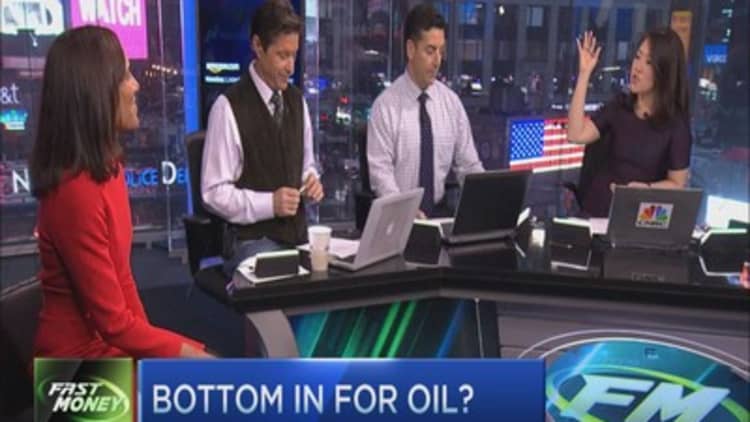
Crude oil may have rallied more than eight percent last week and is trading near 2004 lows, but it doesn't mean we've seen the bottom in the market. In fact, the recent bullish trend could be short-lived in 2016.
RBC Capital Markets' Global Head of Commodity Strategy Helima Croft outlined three potential scenarios for WTI crude on CNBC's "Fast Money" for the new year. The most bullish situation would be seeing more than a million barrels of oil pulled off the market and prices averaging in the $60 dollar range.
The worst case scenario involves a tsunami of new production from OPEC, Saudi Arabia, Iran and Libya hitting the market—all but certain to drive prices even lower. On Thursday, the final day of trading before the Christmas holiday, Brent and U.S. crude closed up by more than a percent, but still well under $40 per barrel.
"If you are thinking about sort of about a mid-$30s average for WTI, low-$40s, I think that's a bearish scenario," said Croft, who's also a CNBC contributor.
Oil in the teens?
Croft's most likely scenario is seeing the market balance in the second half of the year.
"Our base case is this sort of middle range... $52 is our WTI call for next year," she said, implying that U.S. crude would be nearly one-third higher than its current trading levels. The fourth quarter "is really where you want to be looking for WTI to sort of take-off," she added.
Yet, trader Steve Grasso, Stuart Frankel's Director of Institutional Sales, wasn't ruling out $20 oil.
"I think everyone who is looking at oil now, they should think about $20s. They should think about maybe even the, teens because at $110 no one thought it was going to trade at $80," he said. Oil hasn't fallen below $20 in more than a decade, according to Energy Information Administration data.
"Then, no one thought it was going to trade at $65," Grasso added.



